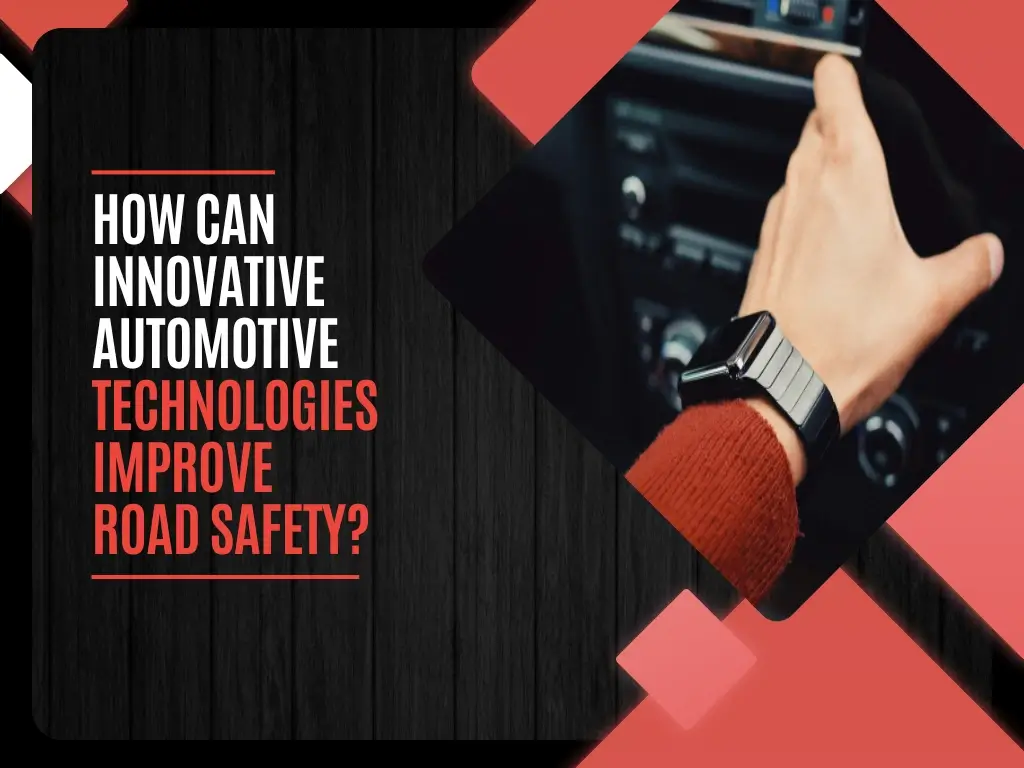How Can Innovative Automotive Technologies Improve Road Safety?
Discover how cutting-edge automotive technologies are enhancing road safety by reducing accidents and saving lives.

Vehicle accidents have been a persistent problem on roads for decades, resulting in thousands of injuries and deaths every year. While technology alone cannot eliminate all motor vehicle incidents, advances in automotive tech hold significant promise to help reduce collision rates going forward.
In this article, we will explore several ways emerging automotive technologies can potentially lower accident frequencies.
Vehicle Safety Over the Decades
The total number of motor vehicle deaths in the United States has increased dramatically since record-keeping began in 1913, reaching over 46,000 in 2022. However, the role and prevalence of automobiles in society have changed enormously over that time as well.
In the early 1900s, only around 1.3 million registered vehicles were on the road, with roughly 2 million licensed drivers. Driving conditions and automobile usage were nowhere near the scale seen today.
As per NSC, by 2022, there were over 283 million registered vehicles in the U.S. These were operated by 235 million licensed drivers, who collectively drove over 3 trillion miles in a single year.
As both vehicle usage and total road miles driven have skyrocketed, it is remarkable that motor vehicle fatality rates have declined. This progress is due to driver behavior improvements, attitudes toward safety, and automotive technology innovations.
In fact, the peak motor vehicle death rate per 100,000 population occurred in 1937, at 30.8 deaths. The total number of fatalities continues to rise due to population and road usage increases. But the current rate has fallen by over half to 13.8 deaths per 100,000 people.
This demonstrates the tremendous successes in gradually enhancing automobile and road safety, which saves thousands of lives each year compared to earlier.
The Importance of Legal Consultation After a Serious Car Accident
Car accidents can be incredibly frightening and confusing events to experience. As per TorHoerman Law, in the aftermath, many people are left with overwhelming legal and financial questions. It’s always a good idea to seek legal guidance in serious cases.
To illustrate the gravity of these situations, consider a recent incident in southern St. Louis. In June 2024, a tragic single-vehicle accident occurred near where River Des Peres meets Ole English Road. The incident, which took place around 11:20 PM, resulted in one fatality and four injuries.
According to First Alert 4, the driver of a Toyota was traveling northbound on River Des Peres. This is when the vehicle veered off the road to the right, colliding with a tree. The impact caused the car to ignite. Emergency services transported the driver to a local medical facility.
A 15-year-old passenger in the front seat tragically passed away at the site. The other passengers, who were all minors, were taken in critical condition to the hospital by ambulance.
In such complex and emotionally charged situations, the expertise of a knowledgeable car accident lawyer in St. Louis can prove invaluable. These professionals can provide crucial guidance and support throughout the legal process.
The Role of Technology in Reducing Car Accidents
How Adaptive Cruise Control Can Reduce Stress on the Road
Adaptive cruise control technology is growing rapidly and is projected to become a standard feature in new vehicles.
A recent report estimates the global market size will increase from $15.63 billion in 2023 to $72.39 billion by 2033. As per Global News Wire, major automotive companies like Continental, Bosch, and Mando are leading the development of these advanced driver assistance systems. Other key players include ZF, NXP Semiconductors, Valeo, Denso, Velodyne, Luminar, Autoliv, and Magna.
Unlike regular cruise control, which only maintains a set speed, adaptive cruise control uses sensors to detect vehicles ahead and adapt speed accordingly. Through cameras, radar, and lidar, it can scan the road and monitor the vehicle in front. If a slower car is detected, your vehicle will automatically slow down. This helps maintain a safe following distance without any input from the driver.
This technology originated in forward collision warning systems. However, automakers soon realized the same sensors could significantly enhance cruise control.
Adaptive cruise control removes the need for constant speed and distance adjustments in heavy traffic by monitoring traffic conditions and braking or accelerating independently. This allows drivers to relax more on long motorway journeys, reducing stress and fatigue. As the technology matures, it promises to make driving on congested roads far more comfortable.
Forward Collision Warning System
Recent market research projects strong growth for forward collision warning systems over the next decade. By 2023, the global market size is estimated to reach $3.1 billion. Impressively, it is then expected to more than double to $5.4 billion by 2032, representing a projected compound annual growth rate of 6.2%.
Forward collision warning alerts drivers to imminent collisions with vehicles directly ahead. Using radar sensors installed in the front of the vehicle, the system monitors the distance to the car in front. When a risk of impact is detected, it provides a visual, audible, or haptic alert to notify the driver. More advanced versions can also detect pedestrians, cyclists, and large animals.
Typically, forward collision warnings only activate at higher speeds for on-road use. Below a certain threshold, it is assumed the driver has sufficient time to brake.
Many vehicles pair forward-collision warnings with automatic emergency braking. While the warning system informs the driver, automatic braking will automatically apply the brakes if a collision remains unavoidable. However, some models only feature the warning component without active braking assistance.
Lane Departure Warning Systems Work
Lane departure warning (LDW) uses a camera to continuously track a car’s position between lane lines. The technology will warn the driver with visual, aural, or haptic cues if it notices the car inadvertently straying from its lane. This helps drivers recognize when corrective steering is needed to avoid potential accidents caused by lane departure.
The camera tracks the lane lines on both sides of the road. As per the National Safety Council, LDW only operates when turn signals are inactive, on straight or slightly curved road sections typically above 35 mph. It assumes the driver intends to change lanes with the signal on or in situations where leaving the lane may be deliberate.
Primarily used on highways with clearly defined lanes, these systems effectively monitor a vehicle’s position. They alert distracted or drowsy drivers before a potential incident occurs.
By recognizing unintentional lane departures early, LDW aims to prevent accidents like sideswiping or running off the road entirely. As camera and processing technology advances, lane departure warning enhances road safety through added driver awareness.
FAQs
1. What are the latest advancements in automobile safety?
A: Recent innovations go beyond basic collision alert systems, which can sometimes be distracting. Advanced Emergency Braking Systems (AEBS) actively prevent rear-end collisions. These systems use sophisticated sensors to constantly measure the gap between your vehicle and those ahead, automatically applying brakes when necessary.
2. Do newer vehicles offer improved safety compared to older models?
A: Research from the National Highway Traffic Safety Administration (NHTSA) indicates that modern automobiles are indeed safer than unmodified classic cars. The agency’s findings show that contemporary safety features such as seatbelts, airbags, and collision avoidance technologies significantly enhance survivability in an accident.
3. What is the fundamental concept behind accident prevention?
A: The core principle of accident prevention revolves around proactive identification and correction of hazardous conditions before incidents occur. Investigating all accidents, even those not resulting in injuries, is crucial. This process helps identify systemic weaknesses and implement measures to prevent similar occurrences in the future.
While technology cannot solve the problem of car accidents alone, it holds great potential to reduce collision rates if widely adopted significantly. As sensors, connectivity, and automated features continue advancing, vehicles of the future may be capable of preventing most accidents.
However, realizing this vision will require automakers to incorporate the most advanced safety systems as standard across all models. It also depends on regulators establishing new policies to incentivize safety innovation and phase out older, non-compliant vehicles. Most importantly, drivers must learn to trust and use the available accident-avoidance systems.



